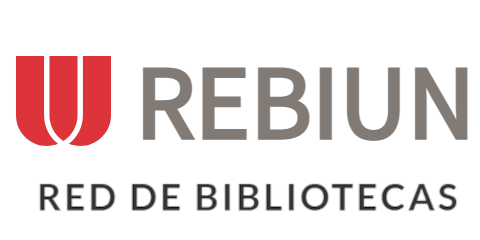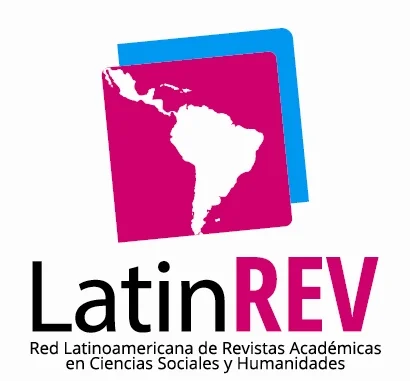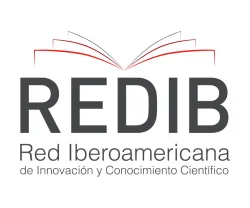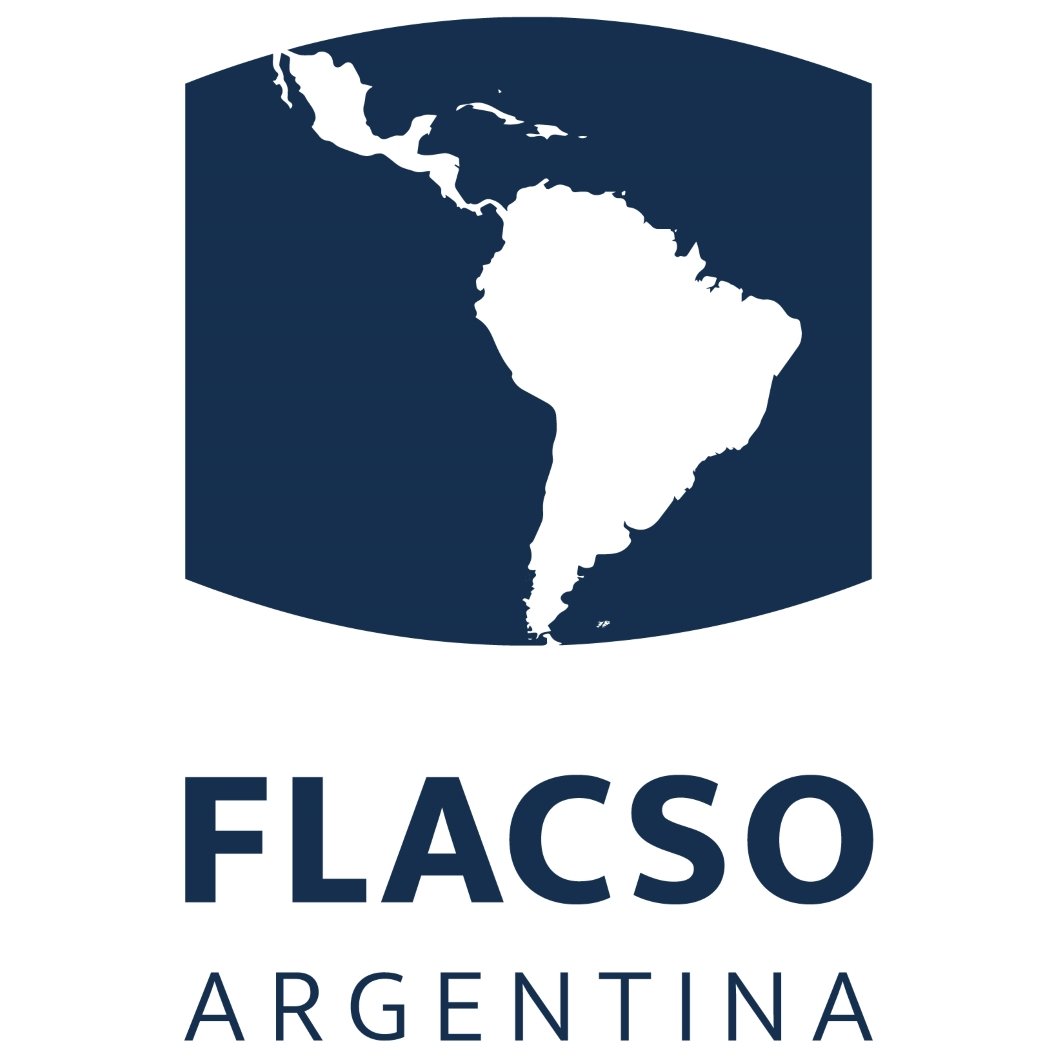Peso Placentario como Factor de Restricción de Crecimiento Intrauterino
Resumen
Objetivo Determinar si el peso placentario se asocia con restricción del crecimiento fetal. Material y métodos Estudio Prospectivo, no experimental, observacional, transversal, casos y controles llevado a cabo del 1 de diciembre del 2023 al 31 de agosto del 2024. Criterios de inclusión: Pacientes con embarazo mayor de 28 semanas, con diagnóstico ultrasonográfico de restricción de crecimeinto fetal y pacientes con diagnóstico ultrasonográfico de peso fetal adecuado para edad gestacional. Criterios de exclusión: pacientes que pidan alta voluntaria o se trasladen a otro hospital antes de la resolución del embarazo, embarazadas que no se pese la placenta. Resultados Se incluyeron 46 pacientes divididas en dos grupos: grupo A 22 pacientes con diagnóstico de restricción de crecimiento fetal y grupo B 24 pacientes sin restricción fetal. La comorbilidad materna que predominó en el grupo A fue la preeclampsia con criterios de severidad. La media del peso placentario del grupo A fue 360.4gr. y grupo B 480.2gr. (p=0.005). La media del peso fetal del grupo A fue de 1985.68gr y grupo B 3269.04gr. (p=0.001). Al analizar el indice feto placentario de las pacientes con restricción de crecimeinto fetal, tomando como punto de referencia el minimo de las pacientes sin restricción de 5.1, se encontró que en el 31.81% el factor de riesgo de RCIU fue la placenta. Conclusiones El tamaño de la placenta contribuye a una tercera parte de los casos de restricción de crecimeinto intrauterino.
Descargas
Citas
2. Infante, L. M. P., & Avendaño, M. A. B. (2015). Restricción del crecimiento intrauterino: una aproximación al diagnóstico, seguimiento y manejo. Revista Chilena de Obstetricia y GinecologíA, 80(6), 493-502. https://doi.org/10.4067/s0717-75262015000600010
3. Lees, C. C., Stampalija, T., Baschat, A. A., da Silva Costa, F., Ferrazzi, E., Figueras, F., Hecher, K., Kingdom, J., Poon, L. C., Salomon, L. J., & Unterscheider, J. (2020). ISUOG Practice Guidelines: diagnosis and management of small‐for‐gestational‐age fetus and fetal growth restriction. Ultrasound in Obstetrics & Gynecology: The Official Journal of the International Society of Ultrasound in Obstetrics and Gynecology, 56(2), 298–312.
https://doi.org/10.1002/uog.22134
4. Resnik, R. (2002). Intrauterine growth restriction. Obstetrics And Gynecology (New York. 1953. Online)/Obstetrics And Gynecology, 99(3), 490-496. https://doi.org/10.1016/s0029-7844(01)01780-x
5. Roberts, D. J., Baergen, R. N., Boyd, T. K., Carreon, C. K., Duncan, V. E., Ernst, L. M., Faye-Petersen, O. M., Folkins, A. K., Hecht, J. L., Heerema-McKenney, A., Heller, D. S., Linn, R. L., Polizzano, C., Ravishankar, S., Redline, R. W., Salafia, C. M., Torous, V. F., & Castro, E. C. (2023). Criteria for placental examination for obstetrical and neonatal providers. American journal of obstetrics and gynecology, 228(5), 497–508.e4.
https://doi.org/10.1016/j.ajog.2022.12.017
6. Padilla-Amigo C, López-Félix J, Martínez-Villafaña E, Sierra-Lozada N. Predicción de la restricción del crecimiento fetal con el algoritmo del tamiz 11-14. Ginecol Obstet Mex 2022; 90 (1): 1-7. https://doi.org/10.24245/gom.v90i1.6302
7. Colella, M., Frérot, A., Novais, A. R. B., & Baud, O. (2018). Neonatal and Long-Term Consequences of Fetal Growth Restriction. Current pediatric reviews, 14(4), 212–218.
https://doi.org/10.2174/1573396314666180712114531
8. Flores, R. S., Pérez, B. G., Mendoza, V. O., De León Escobedo, R., Martínez, H. H., Galarza, A. S., Márquez, W. S., & Ramírez, J. P. (2021). Factores de riesgo asociados a retraso del crecimiento intrauterino. South Florida Journal Of Development, 2(5), 6423-6440.
https://doi.org/10.46932/sfjdv2n5-012
9. Creasy, R. K., Resnik, R., Iams, J. D., Lockwood, C. J., Moore, T., & Greene, M. F. (2013). Creasy and resnik’s maternal-fetal medicine: Principles and practice (7th ed.). W B Saunders.
10. Monroy-Torres, R., Ramírez-Hernández, S. F., Guzmán-Barcenas, J., & Naves-Sánchez, J. (n.d.). Comparación de cinco curvas de crecimiento de uso habitual para prematuros en un hospital público. Medigraphic.com. Retrieved May 22, 2024, from
https://www.medigraphic.com/pdfs/revinvcli/nn-2010/nn102e.pdf
11. Unterscheider, J., Daly, S., Geary, M. P., Kennelly, M. M., McAuliffe, F. M., O'Donoghue, K., Hunter, A., Morrison, J. J., Burke, G., Dicker, P., Tully, E. C., & Malone, F. D. (2013). Optimizing the definition of intrauterine growth restriction: the multicenter prospective PORTO Study. American journal of obstetrics and gynecology, 208(4), 290.e1–290.e2906.
https://doi.org/10.1016/j.ajog.2013.02.007
12. ACOG practice bulletin no. 204: Fetal growth restriction. (2019). Obstetrics and Gynecology, 133(2), e97–e109. https://doi.org/10.1097/aog.0000000000003070
13. Blue, N. R., Beddow, M. E., Savabi, M., Katukuri, V. R., Mozurkewich, E. L., & Chao, C. R. (2018). A comparison of methods for the diagnosis of fetal growth restriction between the Royal College of Obstetricians and Gynaecologists and the American College of Obstetricians and Gynecologists. Obstetrics and Gynecology, 131(5), 835–841.
https://doi.org/10.1097/aog.0000000000002564
14. Figueras, F., Gómez, L., Eixarch, E., Paules, C., Mazarico., Pérez, M., Meler, E., Peguero, A., Gratacós, E., Protocolo Defectos del Crecimiento Fetal. Clinic Barcelona Hospital Universitari. 2019 1-10. https://fetalmedicinebarcelona.org/wp-content/uploads/2024/02/cir-peg.pdf
15. Hadlock, F. P., Harrist, R. B., Sharman, R. S., Deter, R. L., & Park, S. K. (1985). Estimation of fetal weight with the use of head, body, and femur measurements--a prospective study. American journal of obstetrics and gynecology, 151(3), 333–337.
https://doi.org/10.1016/0002-9378(85)90298-4
16. Gardosi, J., & Francis, A. (1999). Controlled trial of fundal height measurement plotted on customised antenatal growth charts. British journal of obstetrics and gynaecology, 106(4), 309–317. https://doi.org/10.1111/j.1471-0528.1999.tb08267.x
17. Gardosi, J., Chang, A., Kalyan, B., Sahota, D., & Symonds, E. M. (1992). Customised antenatal growth charts. Lancet (London, England), 339(8788), 283–287. https://doi.org/10.1016/0140-6736(92)91342-6
18. Gordijn, S. J., Beune, I. M., Thilaganathan, B., Papageorghiou, A., Baschat, A. A., Baker, P. N., Silver, R. M., Wynia, K., & Ganzevoort, W. (2016). Consensus definition of fetal growth restriction: a Delphi procedure. Ultrasound in obstetrics & gynecology : the official journal of the International Society of Ultrasound in Obstetrics and Gynecology, 48(3), 333–339.
https://doi.org/10.1002/uog.15884
19. Maulik D. (2006). Fetal growth restriction: the etiology. Clinical obstetrics and gynecology, 49(2), 228–235. https://doi.org/10.1097/00003081-200606000-00006
20. Odegård, R. A., Vatten, L. J., Nilsen, S. T., Salvesen, K. A., & Austgulen, R. (2000). Preeclampsia and fetal growth. Obstetrics and gynecology, 96(6), 950–955.
21. Howley, H. E., Walker, M., & Rodger, M. A. (2005). A systematic review of the association between factor V Leiden or prothrombin gene variant and intrauterine growth restriction. American journal of obstetrics and gynecology, 192(3), 694–708.
https://doi.org/10.1016/j.ajog.2004.09.011
22. Cliver, S. P., Goldenberg, R. L., Cutter, G. R., Hoffman, H. J., Davis, R. O., & Nelson, K. G. (1995). The effect of cigarette smoking on neonatal anthropometric measurements. Obstetrics and gynecology, 85(4), 625–630. https://doi.org/10.1016/0029-7844(94)00437-I
23. Mook-Kanamori, D. O., Steegers, E. A., Eilers, P. H., Raat, H., Hofman, A., & Jaddoe, V. W. (2010). Risk factors and outcomes associated with first-trimester fetal growth restriction. JAMA, 303(6), 527–534. https://doi.org/10.1001/jama.2010.78
24. Monk, D., & Moore, G. E. (2004). Intrauterine growth restriction--genetic causes and consequences. Seminars in fetal & neonatal medicine, 9(5), 371–378.
https://doi.org/10.1016/j.siny.2004.03.002
25. Cailhol, J., Jourdain, G., Coeur, S. L., Traisathit, P., Boonrod, K., Prommas, S., Putiyanun, C., Kanjanasing, A., Lallemant, M., & Perinatal HIV Prevention Trial Group (2009). Association of low CD4 cell count and intrauterine growth retardation in Thailand. Journal of acquired immune deficiency syndromes (1999), 50(4), 409–413.
https://doi.org/10.1097/QAI.0b013e3181958560
26. Denbow, M. L., Cox, P., Taylor, M., Hammal, D. M., & Fisk, N. M. (2000). Placental angioarchitecture in monochorionic twin pregnancies: relationship to fetal growth, fetofetal transfusion syndrome, and pregnancy outcome. American journal of obstetrics and gynecology, 182(2), 417–426. https://doi.org/10.1016/s0002-9378(00)70233-x
27. Heinonen, S., Taipale, P., & Saarikoski, S. (2001). Weights of placentae from small-for-gestational age infants revisited. Placenta, 22(5), 399–404.
https://doi.org/10.1053/plac.2001.0630
28. Molteni, R. A., Stys, S. J., & Battaglia, F. C. (1978). Relationship of fetal and placental weight in human beings: fetal/placental weight ratios at various gestational ages and birth weight distributions. The Journal of reproductive medicine, 21(5), 327–334.
29. Roberts, D. J., Baergen, R. N., Boyd, T. K., Carreon, C. K., Duncan, V. E., Ernst, L. M., Faye-Petersen, O. M., Folkins, A. K., Hecht, J. L., Heerema-McKenney, A., Heller, D. S., Linn, R. L., Polizzano, C., Ravishankar, S., Redline, R. W., Salafia, C. M., Torous, V. F., & Castro, E. C. (2023). Criteria for placental examination for obstetrical and neonatal providers. American journal of obstetrics and gynecology, 228(5), 497–508.e4.
https://doi.org/10.1016/j.ajog.2022.12.017
30. Pinar, H., Sung, C. J., Oyer, C. E., & Singer, D. B. (1996). Reference values for singleton and twin placental weights. Pediatric pathology & laboratory medicine : journal of the Society for Pediatric Pathology, affiliated with the International Paediatric Pathology Association, 16(6), 901–907. https://doi.org/10.1080/15513819609168713
31. Esakoff, T. F., Cheng, Y. W., Snowden, J. M., Tran, S. H., Shaffer, B. L., & Caughey, A. B. (2015). Velamentous cord insertion: is it associated with adverse perinatal outcomes?. The journal of maternal-fetal & neonatal medicine : the official journal of the European Association of Perinatal Medicine, the Federation of Asia and Oceania Perinatal Societies, the International Society of Perinatal Obstetricians, 28(4), 409–412.
https://doi.org/10.3109/14767058.2014.918098
32. Kaufmann, P., Black, S., & Huppertz, B. (2003). Endovascular trophoblast invasion: implications for the pathogenesis of intrauterine growth retardation and preeclampsia. Biology of reproduction, 69(1), 1–7. https://doi.org/10.1095/biolreprod.102.014977
33. Fetal Growth Restriction: ACOG Practice Bulletin, Number 227. (2021). Obstetrics and gynecology, 137(2), e16–e28. https://doi.org/10.1097/AOG.0000000000004251
34. Mifsud, W., & Sebire, N. J. (2014). Placental pathology in early-onset and late-onset fetal growth restriction. Fetal Diagnosis and Therapy, 36(2), 117–128.
https://doi.org/10.1159/000359969
35. Sepúlveda, S. E., Crispi, B. F., Pons, G. A., & Gratacos, S. E. (2014). Restricción de crecimiento intrauterino. Revista MéDica ClíNica las Condes, 25(6), 958-963.
https://doi.org/10.1016/s0716-8640(14)70644-3
Leiton Leiton, D. R., Engracia Carvallo, D. E., Tamayo León, J. A., Ramírez González, S. Y., & Ramírez González, E. G. (2024). Estrategia metodológica para el mejoramiento del rendimiento académico en la asignatura de ciencias naturales en los estudiantes de educación básica. Estudios Y Perspectivas Revista Científica Y Académica , 4(2), 273–291. https://doi.org/10.61384/r.c.a.v4i2.221
Tama Sánchez , F. A., Vasquez Falconí, J. A., Aguilar Mejía , R. M., Rodríguez Pérez, J. C. A., López Solórzano, A. A., & Paredes Jeréz, K. D. (2024). Xeroderma Pigmentoso Reporte De Caso Y Revisión De La Literatura. Revista Científica De Salud Y Desarrollo Humano, 5(2), 44–55. https://doi.org/10.61368/r.s.d.h.v5i2.117
Magaña Lara, M. J., Zavala Pérez, I. C., Olea Gutiérrez, C. V., & Valle Solís, M. O. (2024). Programa de Educación para la Salud: cartografías sociales sobre Lactancia Materna en estudiantes de Enfermería Universidad de Nayarit, México. Emergentes - Revista Científica, 4(1), 142–157. https://doi.org/10.60112/erc.v4i1.99
Fernández, A. (2023). The Social Impact of Independent Audiovisual Production in the Age of social media: A Case Study in Zamora, Ecuador. Revista Veritas De Difusão Científica, 4(1), 161–180. https://doi.org/10.61616/rvdc.v4i1.42
Martínez, O., Aranda , R., Barreto , E., Fanego , J., Fernández , A., López , J., Medina , J., Meza , M., Muñoz , D., & Urbieta , J. (2024). Los tipos de discriminación laboral en las ciudades de Capiatá y San Lorenzo. Arandu UTIC, 11(1), 77–95. Recuperado a partir de https://www.uticvirtual.edu.py/revista.ojs/index.php/revistas/article/view/179
v, H., & Quispe Coca, R. A. (2024). Tecno Bio Gas. Horizonte Académico, 4(4), 17–23. Recuperado a partir de https://horizonteacademico.org/index.php/horizonte/article/view/14
Da Silva Santos , F., & López Vargas , R. (2020). Efecto del Estrés en la Función Inmune en Pacientes con Enfermedades Autoinmunes: una Revisión de Estudios Latinoamericanos. Revista Científica De Salud Y Desarrollo Humano, 1(1), 46–59. https://doi.org/10.61368/r.s.d.h.v1i1.9
36. Geirsson, R. T., & Busby-Earle, R. M. (1991). Certain dates may not provide a reliable estimate of gestational age. British journal of obstetrics and gynaecology, 98(1), 108–109.
https://doi.org/10.1111/j.1471-0528.1991.tb10323.x
37. Salomon, L. J., Alfirevic, Z., Da Silva Costa, F., Deter, R. L., Figueras, F., Ghi, T., Glanc, P., Khalil, A., Lee, W., Napolitano, R., Papageorghiou, A., Sotiriadis, A., Stirnemann, J., Toi, A., & Yeo, G. (2019). ISUOG Practice Guidelines: ultrasound assessment of fetal biometry and growth. Ultrasound in obstetrics & gynecology : the official journal of the International Society of Ultrasound in Obstetrics and Gynecology, 53(6), 715–723.
https://doi.org/10.1002/uog.20272
38. Kalish, R. B., Thaler, H. T., Chasen, S. T., Gupta, M., Berman, S. J., Rosenwaks, Z., & Chervenak, F. A. (2004). First- and second-trimester ultrasound assessment of gestational age. American journal of obstetrics and gynecology, 191(3), 975–978.
https://doi.org/10.1016/j.ajog.2004.06.053
39. Butt, K., Lim, K., & DIAGNOSTIC IMAGING COMMITTEE (2014). RETIRED: Determination of gestational age by ultrasound. Journal of obstetrics and gynaecology Canada : JOGC = Journal d'obstetrique et gynecologie du Canada : JOGC, 36(2), 171–181.
https://doi.org/10.1016/S1701-2163(15)30664-2
40. Cosmi, E., Ambrosini, G., D'Antona, D., Saccardi, C., & Mari, G. (2005). Doppler, cardiotocography, and biophysical profile changes in growth-restricted fetuses. Obstetrics and gynecology, 106(6), 1240–1245. https://doi.org/10.1097/01.AOG.0000187540.37795.3a
41. Baschat, A. A., Gembruch, U., & Harman, C. R. (2001). The sequence of changes in Doppler and biophysical parameters as severe fetal growth restriction worsens. Ultrasound in obstetrics & gynecology : the official journal of the International Society of Ultrasound in Obstetrics and Gynecology, 18(6), 571–577. https://doi.org/10.1046/j.0960-7692.2001.00591.x
42. Yılmaz, C., Melekoğlu, R., Özdemir, H., & Yaşar, Ş. (2023). The role of different Doppler parameters in predicting adverse neonatal outcomes in fetuses with late-onset fetal growth restriction. Turkish journal of obstetrics and gynecology, 20(2), 86–96.
https://doi.org/10.4274/tjod.galenos.2023.87143
43. Levytska, K., Higgins, M., Keating, S., Melamed, N., Walker, M., Sebire, N. J., & Kingdom, J. C. (2017). Placental Pathology in Relation to Uterine Artery Doppler Findings in Pregnancies with Severe Intrauterine Growth Restriction and Abnormal Umbilical Artery Doppler Changes. American journal of perinatology, 34(5), 451–457. https://doi.org/10.1055/s-0036-1592347
44. Society for Maternal-Fetal Medicine (SMFM). Electronic address: pubs@smfm.org, Martins, J. G., Biggio, J. R., & Abuhamad, A. (2020). Society for Maternal-Fetal Medicine Consult Series #52: Diagnosis and management of fetal growth restriction: (Replaces Clinical Guideline Number 3, April 2012). American journal of obstetrics and gynecology, 223(4), B2–B17. https://doi.org/10.1016/j.ajog.2020.05.010
45. Indications for Outpatient Antenatal Fetal Surveillance: ACOG Committee Opinion, Number 828. (2021). Obstetrics and gynecology, 137(6), e177–e197.
https://doi.org/10.1097/AOG.0000000000004407
46. Vasconcelos, R. P., Brazil Frota Aragão, J. R., Costa Carvalho, F. H., Salani Mota, R. M., de Lucena Feitosa, F. E., & Alencar Júnior, C. A. (2010). Differences in neonatal outcome in fetuses with absent versus reverse end-diastolic flow in umbilical artery Doppler. Fetal diagnosis and therapy, 28(3), 160–166. https://doi.org/10.1159/000319800
47. Ciobanu, A., Wright, A., Syngelaki, A., Wright, D., Akolekar, R., & Nicolaides, K. H. (2019). Fetal Medicine Foundation reference ranges for umbilical artery and middle cerebral artery pulsatility index and cerebroplacental ratio. Ultrasound in obstetrics & gynecology : the official journal of the International Society of Ultrasound in Obstetrics and Gynecology, 53(4), 465–472. https://doi.org/10.1002/uog.20157
48. Baschat, A. A., Gembruch, U., & Harman, C. R. (2001). The sequence of changes in Doppler and biophysical parameters as severe fetal growth restriction worsens. Ultrasound in obstetrics & gynecology : the official journal of the International Society of Ultrasound in Obstetrics and Gynecology, 18(6), 571–577. https://doi.org/10.1046/j.0960-7692.2001.00591.x
49. Cáceda, K., & Hideki, A. (2016). Edad materna como factor de riesgo para retraso en el crecimiento intrauterino en recién nacidos en el Hospital San José del Callao, entre julio 2014 y junio 2015. Universidad Ricardo Palma - URP. https://hdl.handle.net/20.500.14138/537
50. Saldaña Díaz J. Factores de riesgo asociados a restricción de crecimiento intrauterino en neonatos atendidos en el Servicio de Neonatología del Hospital Honorio Delgado, Arequipa, 2017. http://repositorio.unsa.edu.pe/handle/UNSA/8310
51. Moreno Montes, L. Frecuencia de restricción de crecimiento intrauterino en embarazadas en el Hospital José Carrasco Arteaga 2017. http://dspace.uazuay.edu.ec/handle/datos/7289
52. Nava Muñoz, K (2024) Frecuencia de peso bajo para la edad gestacional y el nacimiento en recién nacidos con diagnóstico prenatal de restricción de crecimiento intrauterino.
https://hdl.handle.net/20.500.14330/TES01000860564
53. Sánchez Cobo, Daniela,(2021) Cambios morfológicos placentarios en pacientes con preeclampsia y/o restricción de crecimiento intrauterino e interpretación de sus desenlaces perinatales.
https://hdl.handle.net/20.500.14330/TES01000807669
54. Cetin, I., & Antonazzo, P. (2009). The role of the placenta in intrauterine growth restriction (IUGR). Zeitschrift fur Geburtshilfe und Neonatologie, 213(3), 84–88.
https://doi.org/10.1055/s-0029-1224143
55. Vega, N (2022). Factores de riesgo asociados al retardo del crecimiento intrauterino en recién nacidos en el hospital santa maría del socorro. Universidad Privada San Juan Bautista.
https://hdl.handle.net/20.500.14308/4394
56. ACOG practice bulletin no. 227: Fetal growth restriction. (2021). Obstetrics andGynecology, https://files.medelement.com/uploads/materials/f17f05127e54e357c2accd8c6ac8ce6b.pdf
Derechos de autor 2025 Blanca Estela López Álvarez , Yazmín del Socorro Conde Gutiérrez

Esta obra está bajo licencia internacional Creative Commons Reconocimiento 4.0.













.png)




















.png)
1.png)


